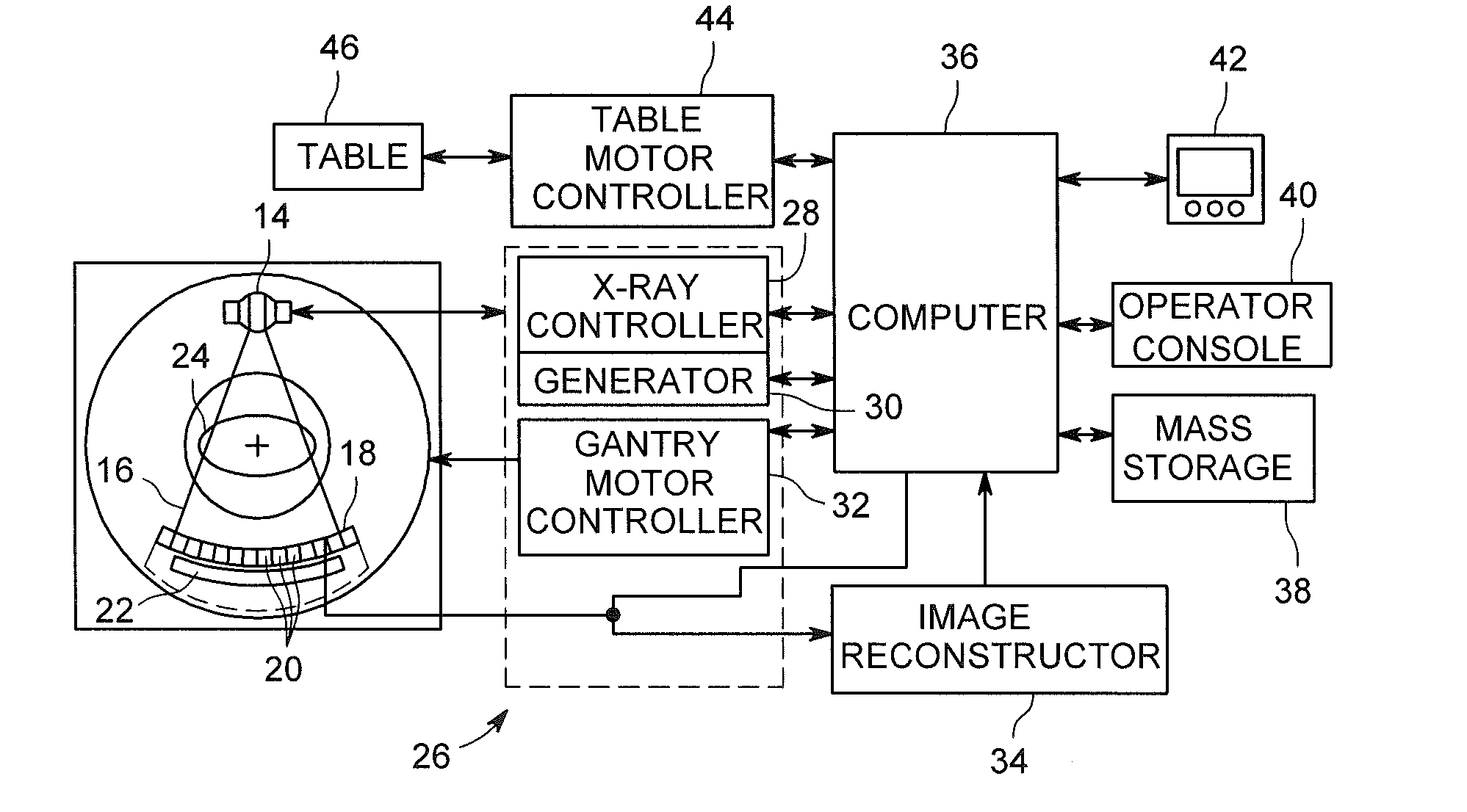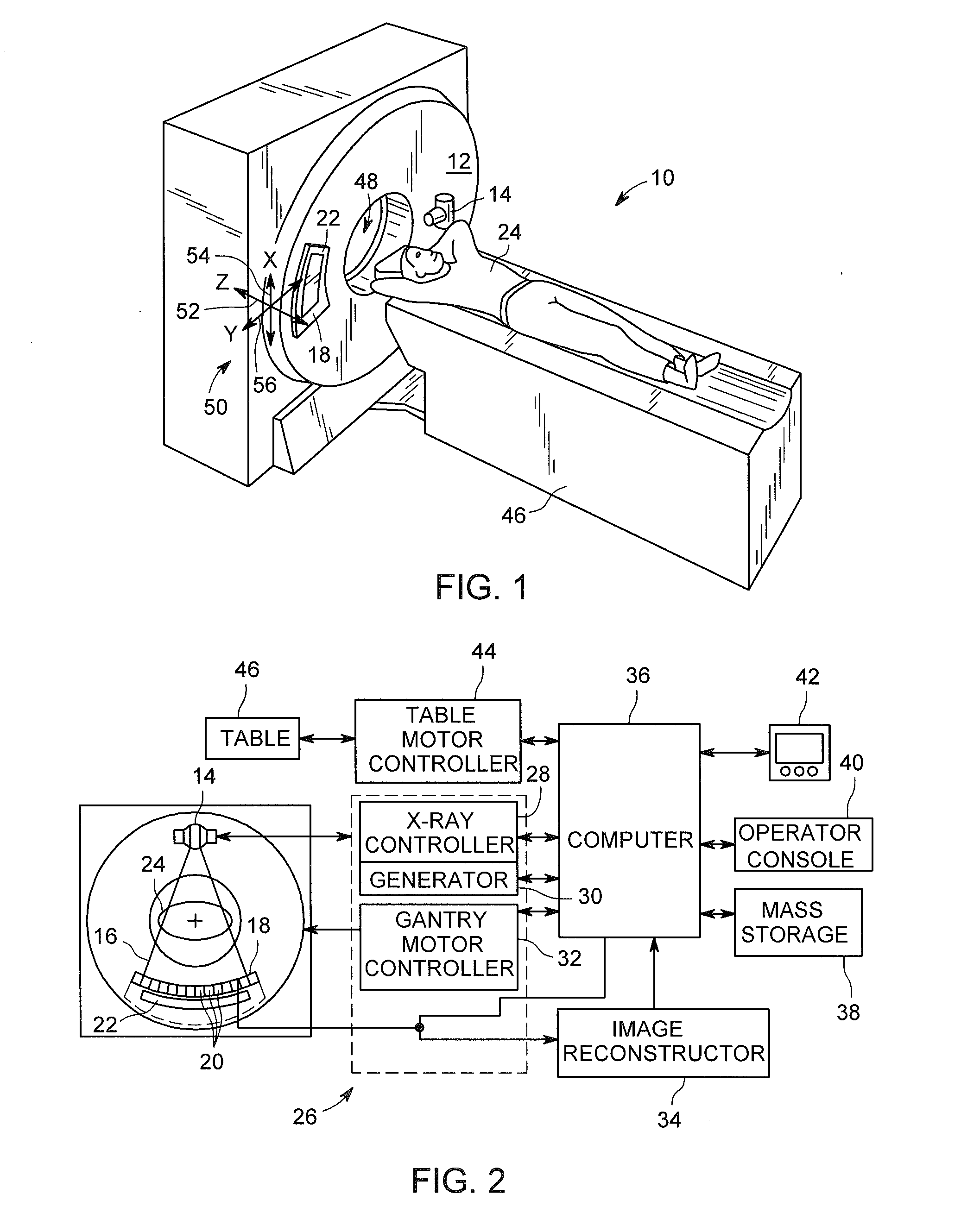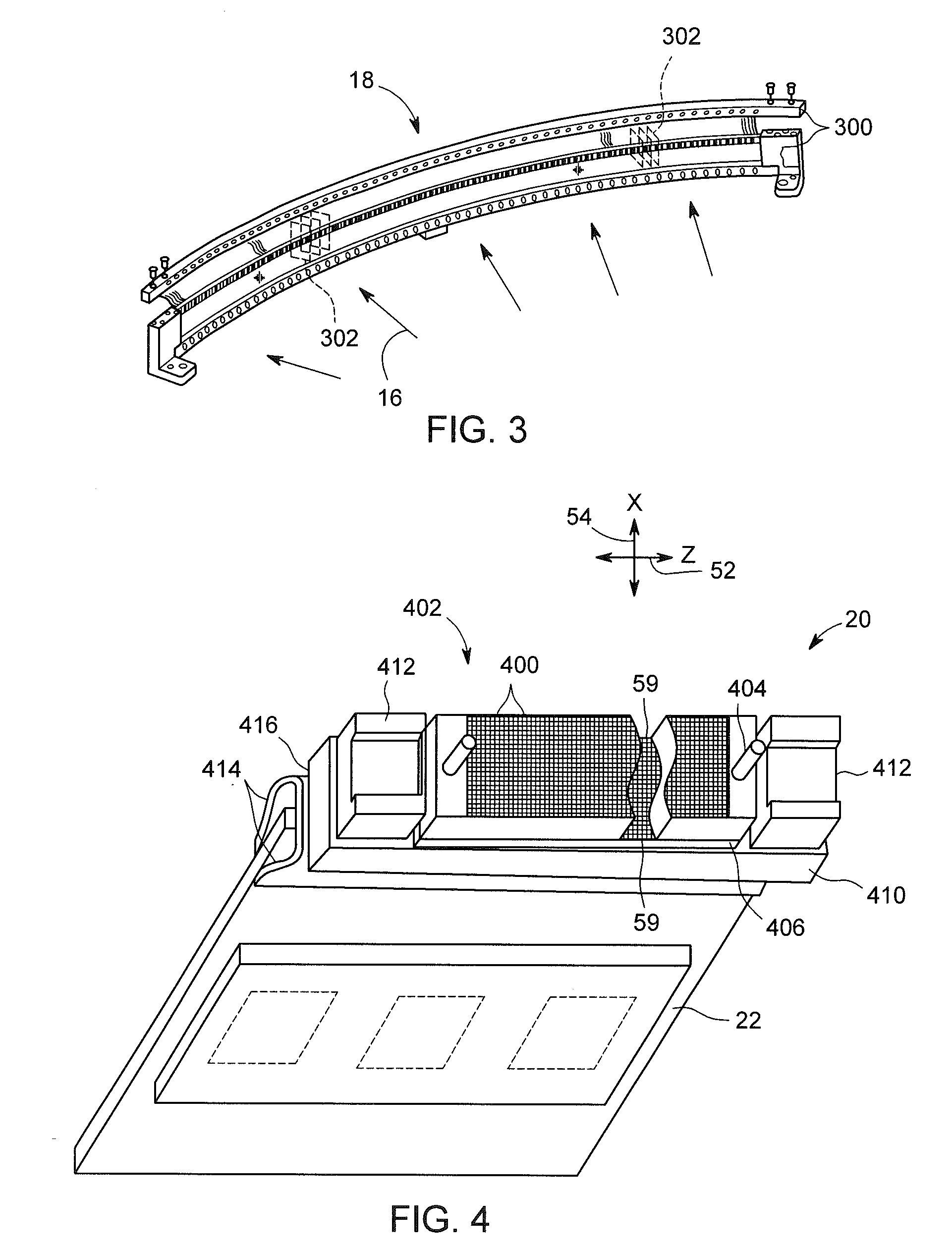System and method of correcting banding artifacts in cardiac ct
a banding artifact and cardiac ct technology, applied in the field of diagnostic imaging, can solve the problems of increasing vessel visualization and reporting difficulty, and affecting the accuracy of ct images
- Summary
- Abstract
- Description
- Claims
- Application Information
AI Technical Summary
Benefits of technology
Problems solved by technology
Method used
Image
Examples
Embodiment Construction
[0029]Disclosed is a post-processing approach which reduces cardiac CT banding artifacts by focusing on the coronary arteries. The disclosed process provides a dedicated post-processing filter that the user can switch ON or OFF to compensate for the banding artifacts on a given vessel. The filter will leverage the centerline used to visualize the vessel to detect potential slab-to-slab misalignments artifact, quantify it, and eventually compensate for it with vessel-centered local deformation. Additionally / subsequently, the “seam artifact” that can occur at a slab-to-slab boundary is minimized with an adaptive greyscale de-banding technique that preserves the integrity of the vessel, avoiding the possibility of creating new artifacts within / near the vessel due to the greyscale debanding correction itself (that could be misinterpreted as a pathology).
[0030]The operating environment of disclosed embodiments is described with respect to a sixty-four-slice computed tomography (CT) syste...
PUM
 Login to View More
Login to View More Abstract
Description
Claims
Application Information
 Login to View More
Login to View More - R&D
- Intellectual Property
- Life Sciences
- Materials
- Tech Scout
- Unparalleled Data Quality
- Higher Quality Content
- 60% Fewer Hallucinations
Browse by: Latest US Patents, China's latest patents, Technical Efficacy Thesaurus, Application Domain, Technology Topic, Popular Technical Reports.
© 2025 PatSnap. All rights reserved.Legal|Privacy policy|Modern Slavery Act Transparency Statement|Sitemap|About US| Contact US: help@patsnap.com



